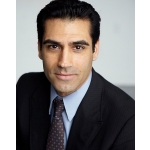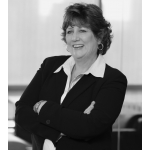LMA Southwest Region Conference Co-Chairs
 |
 |
|
Miki Hanlen,Director, Marketing CommunicationsSteptoe & Johnson LLPLMA SW Board – Director |
Jessica JaramilloMarketing DirectorIreland Stapleton Pryor & Pascoe, PCLMA SW Board – President-Elect |
The LMA Southwest Region Conference, held October 26 – 27 in downtown Denver, virtually flew by due to the quality of presentations. Hats off to conference co-chairs Jessica Jaramillo and Miki Hanlen for organizing a successful event featuring many intriguing and engaging discussions.
Intriguing insights on innovation, communication and marketing were discussed in detail. Every speaker touched on at least one of three themes:
- Lawyers and law firms who haven’t already, should get over the idea that innovation is going to displace their services, and figure out how to benefit from it.
- Strategies that benefit clients will benefit the firm, and the way to win in today’s competitive environment is to think collaboratively and integratively (win-win) as opposed to distributively (win-lose). “The client experience is at the center of it all.”
- Marketing and legal operations, which are now invaluable to the business side of law, demand communication and leadership skills.
For the benefit of anyone who wasn’t able to attend, the following recap features several key takeaways from each speaker.
GREAT PRESENCE
I. Executive Presence: You know it when you see it

Peggy Klaus, Klaus & Associates, Inc.
Bringing your best self to high-stakes situations isn’t easy, but can be done with executive presence.
Executive presence, as defined by Peggy, is “the ability to speak with a compelling combination of both warmth and strength.”
- Warmth is shown by humor, body language and inflection that conveys openness.
- Strength is derived from your experience, achievements and professional distinctions.
“You’re going to spend a lot of time outside of your comfort zone.”
Peggy instructed everyone in the audience to find one partner for a series of short exercises. Participants first described their professional roles in 20 seconds, emphasizing things they took pride in. They were then given an equal amount of time to describe something they were passionate about. Peggy noted a striking contrast.
In the first exercise, participants smiled less, displayed a closed posture and spoke with a lack of inflection. “This is absolutely communication meltdown material, and that is what I saw in that first exercise.”
Peggy then contrasted this to the energy and passion people exuded in the second exercise as they described things they were passionate about. There are three key takeaways derived from this:
- Learn to speak about your professional role with the same enthusiasm as you speak about your other passions. Though we may be passionate about our careers, we’re more cerebral when speaking about them.
- Be Specific. (Peggy’s “evangelical two words”). Identify the behaviors you do well so they can be strengthened and reinforced. Identify behaviors you don’t do well so they can be eliminated or improved upon.
- Use “bragologues,” a term Peggy coined. A bragologue is a pithy, engaging and storylike monologue about something you do exceptionally well. When people discuss their professional accomplishments, they tend to list them off rather than tell conversational, fluid stories. The key to a good bragologue is to be able to speak with executive presence: passion, delight, confidence and a sense of urgency.
Easier said than done? Go Over the Top!
Peggy rounded out the session with her Over the Top (OTT) exercise, a practice and warm-up technique she coined. OTT involves speaking and gesturing in a really big, exaggerated manner, placing you well outside of your comfort zone. This spikes your adrenaline and brings it down to the Goldilocks level at the optimal time, allowing you to “hit your performance stride exactly where it needs to be.”
The audience went through an OTT exercise, which was entertaining, memorable and actually did loosen everybody up.
“If you do OTT and do it really big and really exaggerated…it’s gonna feel really stupid!” Peggy admitted, prompting an outburst of laughter. OTT is uncomfortable, but it’s going to position you to be at your best when it counts.
GREAT TRANSFORMATION
II. The Role of Legal Operations & Law Firm Marketing Departments
 |
 |
|
Merry Neitlich – Managing PartnerEM Consulting |
Tracy McMahon – Director of Legal OperationsDaVita, Inc. |
The emerging discipline of “legal operations” is redefining the legal industry. Legal departments at corporations have greater rigor with regard to their budgets than they once did, making process improvements and innovation indispensable. Many in-house legal departments have brought in legal operations professionals to bring innovation and business discipline to their work. Denver-based DaVita is a world leader in dialysis and kidney care, making legal operations extremely important to its work of providing life-improving and life-extending treatments.
What are legal operations, why do they matter and how can they be implemented?
1. Introduction to Legal Operations
Legal operations professionals are looking for efficiencies and best practices, not just cost-competitiveness. Among other responsibilities, these professionals may play a significant role in selecting and retaining law firms. The Corporate Legal Operations Consortium (CLOC) defines legal operations as “a multi-disciplinary function that optimizes legal services delivery to a business or government entity by focusing on twelve core competencies…”
CLOC’s 12 Core Competencies include:
- Strategic planning
- Communications
- Professional development and team building
- Creating, identifying & making best practices available
- Knowledge management
- A general emphasis on collaboration, transparency and iterative learning
2. Why Do Legal Operations Matter?
Legal operations isn’t necessarily just driving costs down; it’s working together towards win-win solutions. In Tracy’s words, “Legal operations is taking a look at the entire whole of our organization and figuring out how we can work better together.”
“For the most part, the things that you’re doing on a daily basis really fall into buckets,” Tracy explains. Some tasks are “snowflakes,” meaning they’re unique and high-touch. Others are commonplace. These “buckets” don’t require the best and brightest, so they can be standardized or outsourced to achieve cost savings without sacrificing quality.
3. Implementing legal operations
Tracy offered the following advice for firms starting to do legal operations:
- Start small. Reach out to a few key clients to see how you can work together more integratively.
- Ask key partners how you resonate with them and how you can best meet their needs. “Our budget is not going to blow up next year…So how can you help me do more with what I have?”
- Having a culture of learning, knowing what technologies are in place and having a sound understanding of what your firm does well, will help you to identify low-hanging fruit for process improvements and cost reductions.
- Good partnerships are based on a mutual commitment to greater transparency and efficiency.
Diversity: A strategic asset
Recruiting minorities and women has become all the more important to legal departments with the passing of time. Women bring a different tone and way of thinking to organizations, as do minorities. The world is becoming more interconnected, and having a variety of perspectives is invaluable.
“Understanding cultural nuances, values and sensitivities is important to legal operations,” states Tracy. “DaVita benefitted from making it a priority.”
Tying it all together
In a single word, legal operations could be described as integrative. It involves integrating client feedback processes, billing (notably, alternative fee arrangements), procurement, IT, cybersecurity, culture, budgeting and other activities. It wouldn’t work in a silo.
Metrics are important to legal operations. As the saying goes, “You can’t manage what you don’t measure.” Metrics, or key performance indicators, help legal professionals communicate what they’re really good at.
In a nutshell, legal operations provides efficiency, transparency, and a higher degree of predictability. While only 25% of the Fortune 500 are using legal operations, Tracy’s experience at DaVita suggests that they’re strategically invaluable.
GREAT LAW
III. Great Law & Innovation: Using future casting to drive innovation at your firm

Debra Baker, Esq. – Managing Director, GrowthPlay
The legal profession is based on precedent: examining decisions made in the past to know what to do going forward. While that discipline provides value in the right context, it doesn’t lend itself to innovation. Firms need to be more innovative about the way they practice law. “If we leave innovation up to our lawyers, it’s never going to happen,” Debra explains. Few law firms, she points out, have departments or committees focused on innovation or R&D, and they ought to.
Great Law demands that legal professionals ask, over and over: How can we improve the way law firms sell and deliver services?
Great Law
Debra introduced the concept of “Great Law” (which she discussed previously at the LMA West Region conference). Great Law emphasizes attracting, retaining and nurturing great people. It values collaboration and stresses selling value rather than selling increments of time.
Good Law Economics vs. Great Law Economics
“There’s a purely business case to be made that we should be innovating.”
- Rather than focusing on productivity, Great Law emphasizes learning and refining services to provide better value.
- The traditional business model is about the billable hour (revenue). Great Law is about relationships and client retention.
- Rather than the all-too-common mindset of scarcity and competition, practicing Great Law means embracing a mindset of abundance, interconnectedness and collaboration.
The synergies created by practicing Great Law result in a more profitable business with more predictable earnings.
The Triple Bottom Line: Great Law is about Purpose
By creating cultures that enable people to be who they want to be, firms attract more talented people and have clearer strategic direction.
Creating and reinforcing a sense of purpose. The “triple bottom line” is: People, Planet and Profit. Encouraging partners and associates to volunteer and pursue things they’re passionate about can result in lower turnover and shorter job openings, as well as attracting clients.
Design Thinking
“We do not have to break the law firm business model and start over.” Firms can begin to innovate in very small ways.
First, tackling a problem requires focusing on its root cause rather than the problem per se. For instance, you can’t just say, “We need to be more collaborative.” You have to examine the underlying barriers to collaboration. This applies equally to any other organizational challenge.
Innovation can be done iteratively, frequently, and in a cost-sensitive manner. It’s about creating feedback loops, a culture of learning, new processes and bringing inquisitive people in who aren’t afraid to ask clients and colleagues “naïve” questions.
Remember, the end game is better quality clients and client relationships. To that end, law firms should take a hyper-specific focus, positioning themselves within the industries they’re most valuable to.
Client Experience is at the Center of It All
- Remember to engage clients early and often. Innovation isn’t a one-off project, it’s an ongoing process predicated on a mindset.
- Don’t ask clients how you’re doing today, ask more incisive questions that can help inform the direction you take as a firm.
- Stress the combined capabilities of the firm rather than individuals selling themselves.
Summing It Up
Creating operational efficiencies that allow firms to do routinized tasks more effectively means they can sell the brainwork at a higher value. Great Law means breaking down organizational silos, creating a culture of collaboration and iterative learning, and delivering satisfactory experiences to clients.
“It should not be an option for lawyers to be able to choose whether to continuously improve the way they’re doing things.” – Debra Baker
GREAT LEADERSHIP
IV. Leading Change: A CMO Panel Discussion
Moderator:

Mark Beese – President
Leadership for Lawyers LLC
Panelists:
|
|
|
|
Kathleen A. Flynn – Chief Marketing OfficerBryan Cave LLP |
Ashraf Lakhani – Director of Business Development and MarketingPorter Hedges LLP |
 |
Lisa M. Simon – Chief Marketing and Business Development OfficerLewis Roca Rothgerber Christie |
Under the best of circumstances, leading change involves a lot of moving parts. As “change agents,” legal marketers and business development professionals are often faced with organizational inertia. This panel discussion brought three veteran business development leaders forward to discuss business strategy, the challenges of advocating and implementing change, and the setbacks and rewards they’ve experienced in their roles. Discussion points included confidence, vision, relationships and resilience.
- Confidence
Ashraf stated, “You don’t always have to have the answers. You have to have the innate confidence … that you can find the path to a solution.” This was echoed by the other panelists.
Kathleen offered interesting insights about the value of experience. “One of the gifts of age is that … [lawyers] respect a little grey hair.” Past accomplishments are affirming, past failures can be instructive, and it all amounts to credibility and confidence. Remember to take stock of it when you’re in a challenging role. To paraphrase Kathleen: “I’ve done it, I understand it, I’m confident that I can do it again.”
“If I’m not always slightly terrified, I know I’m not in the middle of some pretty significant change,” admitted Lisa. “You will sweat, but you’ve got to figure out how to keep a clear mind.”
Bottom line: Being a change agent means you must exude confidence, even when you’re slightly terrified. If you need to, fake it ‘til you make it.
- Vision
A shared vision is key to strategic planning, and being able to communicate it will help get buy-in from leaders and other key stakeholders. To that end, talk to the partners that are open-minded and forthcoming with ideas. Periodically re-examine your assumptions to make sure you’re steering the ship in the right direction.
Bottom line: Establish a clear, informed vision and get buy-in from those who matter most.
- Relationships
You have to figure out a way to be present for people when you don’t actually need something from them. Seeing your name in an email subject line shouldn’t always mean the recipient has an action item waiting.
“Don’t get too comfortable in your office.” Get out among your peers. Business development is an inherently cross-disciplinary role. If you’re wearing different hats, you need to understand the challenges and aspirations of your colleagues. As Ashraf put it, “Every single person you’re working with has a different motivation for why they’re practicing law…You have to understand that if you want to be successful.”
Finally, walk the walk. Be responsive to inquiries, emails and calls.
Bottom line: Be seen as a person, not just a machine that gets things done. Investing in relationships may not have a short-term payoff, but it will pay dividends when it counts.
Somebody is always going to be unhappy with you if you’re a change agent. You need to be comfortable with that. Lean on your network. Get buy-in from key leaders. It helps to be able to say an executive told you to refer anyone who doesn’t want to participate in a change (such as on-boarding a new CRM platform) to her.
“You are going to screw up. … You are going to fail,” Lisa stated. “That’s just part of this gig. It’s how you respond that matters.”
Bottom line: Thick skin. You need it.
GREAT CONFIDENCE
V. Marketing “Me”: Expanding influence and increasing effectiveness within the firm and beyond

Mary Carmel Kaczmarek, Esq. – Skillful Means Marketing LLC
Premise: Marketing “Me” creates more opportunities for people to do things they find rewarding. At the institutional level, it’s about getting and keeping better work and better clients. Citing the research of Robert B. Cialdini, Mary led a discussion on influence. How does influence work, and how can we develop more of it? How can we change our relationships with the people who matter our mutual benefit?
The Secret Sauce: What is influence “made” of?
There are many qualities related to influence—passion, talent, confidence, positivity and expertise, to name a few. According to Mary, they all fall under three umbrellas:
- Expertise
This fairly objective quality rests on a person’s credentials, professional background, skills and talents. It establishes authority.
- Social proof
Mary likens social proof to third-party validation. Having specific examples of projects executed successfully, challenges overcome and people who will attest to your competence, is critical to gaining influence. Soliciting testimonials is an invaluable, but often overlooked approach to strengthening the “social proof” of a person’s value.
- Likeability
Likeability promotes a willingness in other people to overlook shortcomings and can transform perceptions of “negative” qualities (such as ambition) into “positive” qualities (such as helpfulness). Likeability is specifically evidenced by three traits:
- Similarity
- Praise
- Helpfulness
Similarity can be a very meaningful way to help heal a breach that’s occurred in a relationship. Praise can build rapport and reduce tensions in challenging relationships. Helpfulness can be used as a currency.
Influence will help you position yourself to get the kind of work you’re passionate about. After all, “It is very hard to be good at something that you don’t have a genuine passion for,” Mary states.
GREAT INTELLIGENCE
VI. Artificial Intelligence and the Very Scary Future of Law

Ross Fishman, JD – Fishman Marketing, Inc.
What is the likelihood that your doctor diagnoses you correctly on any given visit? Ross opened the first of three TEDx style talks by citing research that less than half of medical diagnoses are fact-based. Humans have a limited ability to process data, and they compensate based on experience and instinct. Which would you rather rely on as a patient?
Experiential vs. Data-Driven Predictions
Ross asked the audience a somewhat disturbing question: What if your doctor had access to all your online activity, credit card info and your phone’s GPS history? Could he or she arrive at a more accurate diagnosis by examining correlations and risk factors of your choices? It’s likely.
Similarly, how often are your firm’s lawyers correct? A lot of high-stakes legal decisions are based on “gut” instincts and experience. How much data can one lawyer realistically inspect or even keep in his or her head? How much data can one lawyer analyze?
Thousands of relevant cases, precedents, unpublished opinions…Millions of data points.
How many VARIABLES can a lawyer consider? Since there are infinite possible data points, even the experts have a tiny data set in the grand scheme of things. What relevant data are we ignoring? What patterns are we missing?
- Municipality, judge, opponent, the day of the week an accident occurred, the weather, race, age, religion, class, identity of court clerks, judge’s family situation, morning or afternoon trial, day of the week, corporation or person.
Watson (the famous artificial intelligence program) can sift through data and identify patterns and correlations that humans couldn’t possibly recognize. Just as in chess, seemingly-pointless tweaks in strategy can determine the outcome of a case.
Artificial intelligence (AI) can aggregate data and run weighted averages and reward/risk assessments with fewer errors and oversights than a brilliant lawyer.
AI is already attacking the low end of the legal market. For instance, insurance companies use AI to compare thousands of contracts, saving hundreds of millions in legal fees. At the same time, AI is democratizing the high-end of the market.
- Some AI analysis platforms and databases will soon be available as a monthly subscription.
- Ergo, a small town solo counsel may have access to just as much valuable information as leading law firms at a pittance.
Who’s safe, anyway?
GREAT TIME MANAGEMENT
VII. Time Management Strategies for the Overwhelmed Marketer

David Ackert, M.A. – President, Ackert, Inc.
David covered four discussion points in this second “TEDx style” presentation:
1. Avoid multitasking
David went right for the throat of the multitasking myth, citing cognitive science. High-level multitasking, he pointed out, is neurologically impossible, like physically being two places at once. To reinforce the point, he took the audience through an exercise of attempting to complete two simple tasks in 30 seconds—first separately, then alternating between the two. Sure enough, both progress towards completion and quality suffered when the audience attempted to multitask.
The lesson? Rather than being embraced, multitasking should be avoided whenever possible.
“You’re making yourself 20% stupider, less productive and more error-prone” by multitasking, he stated.
2. Identify and take aim at your personal time wasters
Everyone falls victim to them (this list is by no means exhaustive):
- Multitasking
- Poor communication with colleagues
- Ad-hoc time management systems
- Interruptions
- Poor delegation (on your part or others’)
- Procrastination
- Technology
- Bad habits
By identifying our top three, each of us can take corrective measures and improve productivity without fuss or delay.
3. Use the medium of communication most suitable to the situation
The “Hierarchy of Communication” ranges from high-touch (face to face) to ultra-low-touch (social media).
- “If there’s anything that requires negotiation, if there’s anything that involves any emotional component…move up the hierarchy.”
- Two-way/high-touch communications ultimately save time by preventing misunderstandings, making people feel more accountable to one another and by their inherently more fluent nature.
4. Interruption management
David covered a few final, practical tips on managing common interruptions. These included turning off email alerts and other automated interrupters, allowing non-urgent calls to go to voicemail, responding to emails and voicemails in chunks and facing away from the door or opening when you’re absorbed in a task.
“Setting some of these parameters in place will reduce the frequency which people just interrupt you because they think they can,” David concluded.
GREAT PERSUASION
VIII. How Legal Marketers Can Help Win Over Social Media Skeptics

Adrian Dayton, Esq. – ClearView Social
Hot cognition vs. Cold cognition
Behavior change can be inspired by appealing to people’s reason (logos) or their emotions (pathos). The latter approach is usually more effective. In this third TEDx style presentation, Adrian identified four social media personas and discussed ways to move them:
| Persona | Approach | Notes |
| Non-participants | Fear of Loss | A lacking presence online makes a poor first impression on many people, resulting in lost business. |
| Skeptics | Intrigue | Your competitors and clients are on LinkedIn, are you missing something? |
| Hungry lawyers in transition | Paint by Numbers | Identify three simple things lawyers can do via social media to bring in more business. |
| Power users | Reinforce Behavior | Give these social media enthusiasts the tools they need to amplify what they’re doing. |
“75% of the time, your LinkedIn profile shows up in the top three when doing a Google search in your name,” Adrian points out, strengthening the case for a thorough and engaging profile. A few final points to keep in mind:
- Lawyers who are active on LinkedIn and other social media get 300% more views on their firm bios.
- Contrary to common perceptions, Facebook is a great place to talk about professional endeavors. People may think of Facebook connections as “friends,” but there are likely a lot of clients and professional colleagues among them. Sharing articles on multiple platforms, including LinkedIn and Twitter, making judicious use of hashtags and using other social media best practices greatly increases exposure.
- It’s easy to track conversions and measure ROI on social media platforms, augmenting their value.
Wrap-up
The presenters did an excellent job of providing thought-provoking and actionable insights for marketers to take back to their firms. We hope everyone will share how they’ve put those insights to use in the coming year so we can build upon each other’s successes and learn from each other’s challenges.
Don’t miss the January 5 registration deadline for the LMA Annual Conference taking place April 9 – 11, 2018 in New Orleans. The conference will feature over 100 speakers providing actionable insights to more than 1,500 legal professionals. Register
Berbay Marketing & PR fuels law firms’ revenue growth.
310.405.7343




